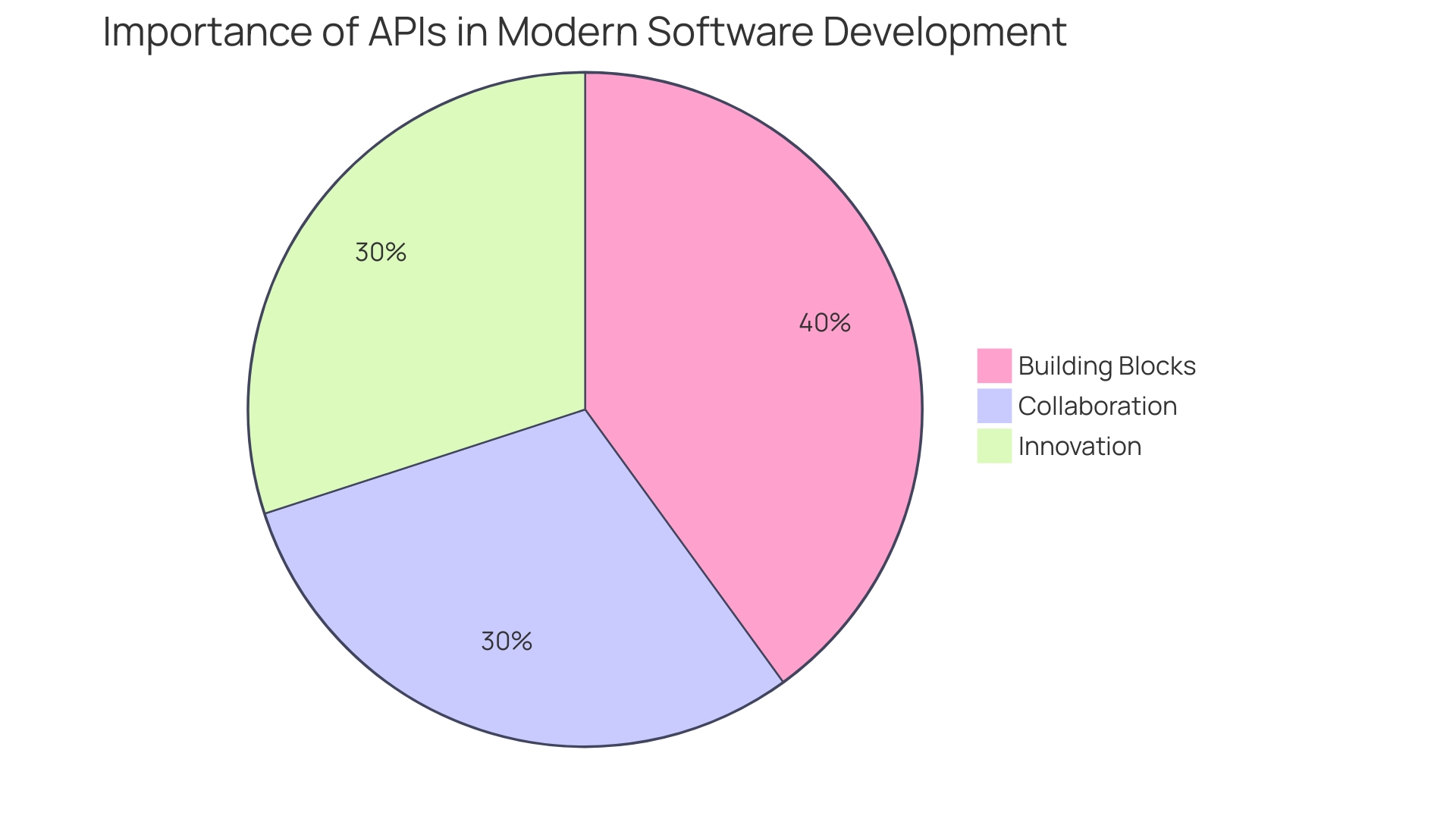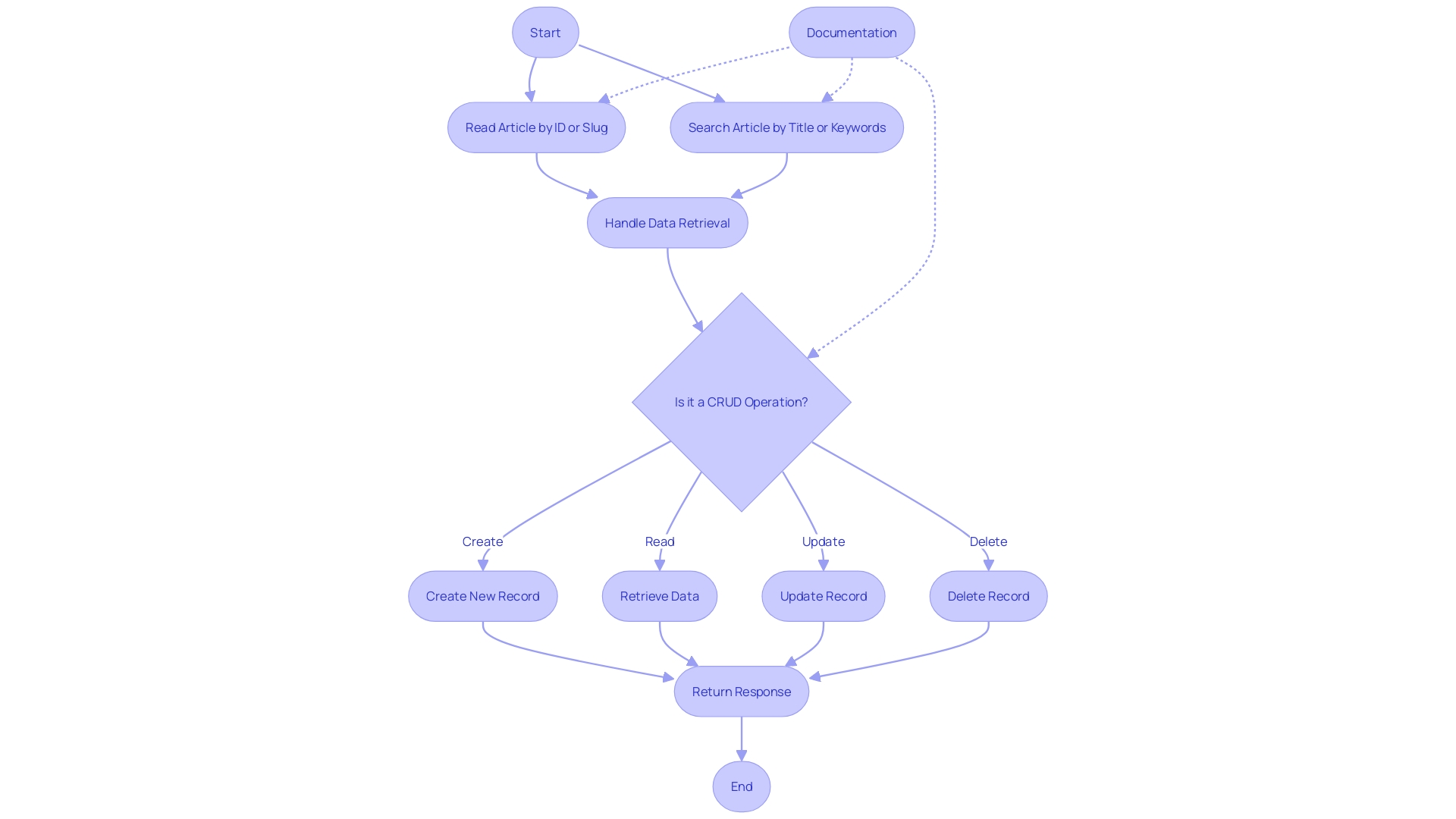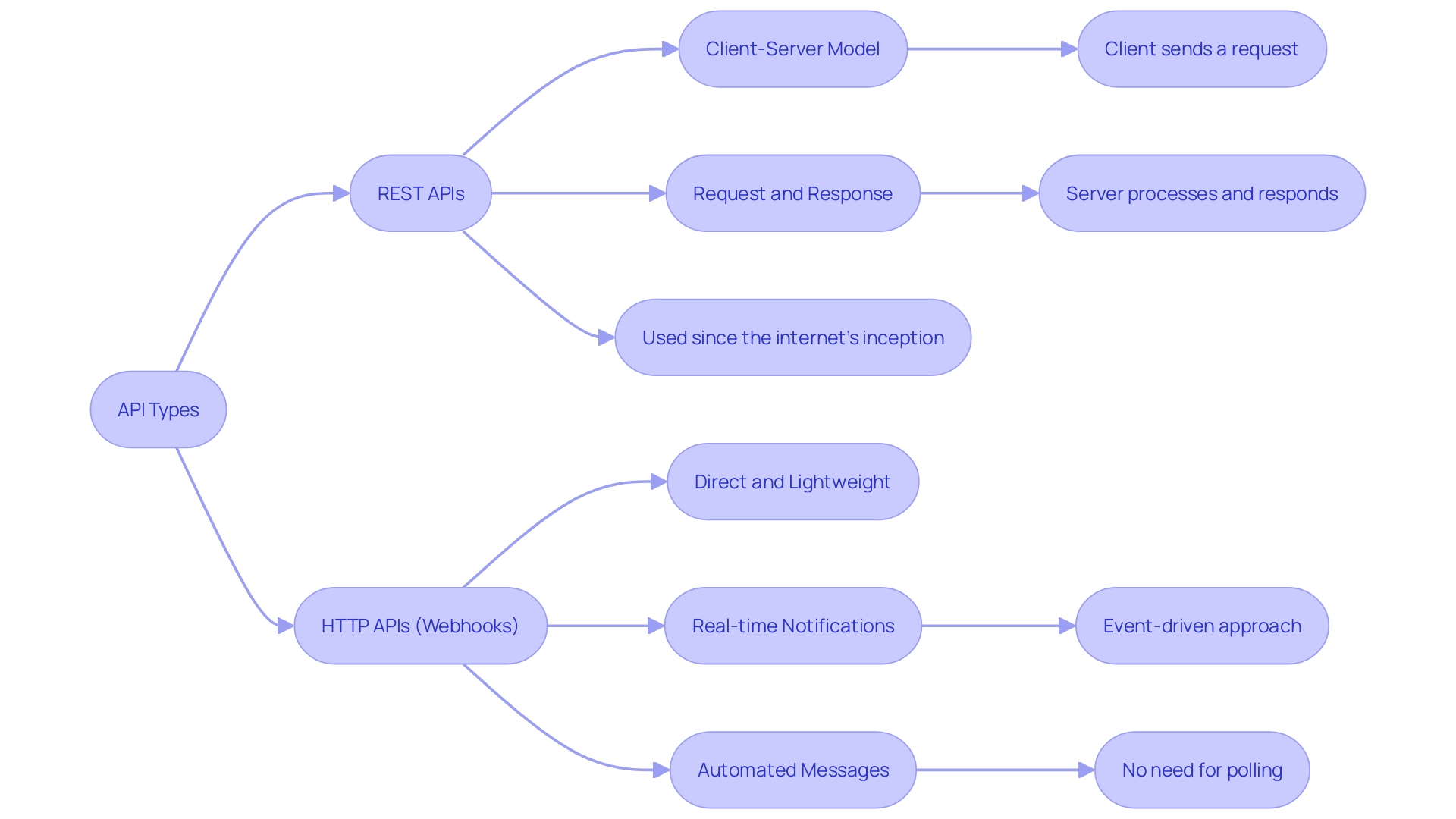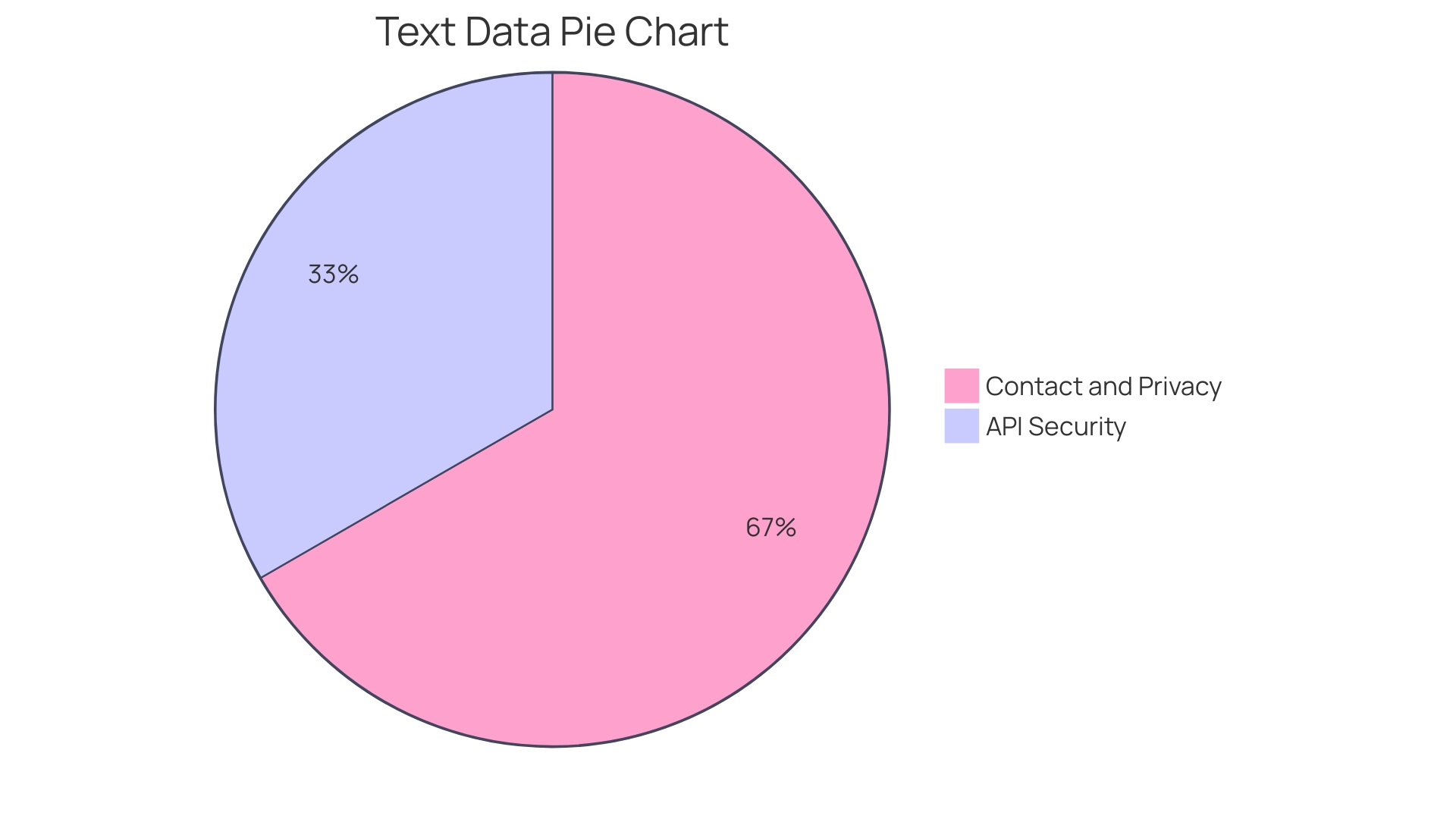Introduction
APIs, or Application Programming Interfaces, play a crucial role in enabling seamless interaction between different software applications over the internet. They serve as the glue that connects various systems, allowing them to exchange data through the HTTP protocol. APIs define the rules for communication, ensuring a standardized approach to requests and responses.
In this article, we will explore the benefits and outcomes of using Kodezi to achieve maximum efficiency and productivity. As we delve into the world of APIs and their impact on software development, we will discover the advantages of HTTP APIs and REST APIs, the key differences between them, and their applications in different industries. Additionally, we will explore the architectural style, data format, statefulness, transport protocol, security, performance, pricing, and the challenges associated with both HTTP and REST APIs.
By understanding the nuances of these APIs, developers and businesses can make informed decisions and leverage their strengths to build robust and scalable applications in our increasingly interconnected digital world.
What is an HTTP API?
APIs, or Application Programming Interfaces, are the vital components that enable different software applications to interact seamlessly over the internet. As the glue of the digital ecosystem, APIs allow applications to send and exchange data through the HTTP protocol, the cornerstone of data communication on the World Wide Web.
At a fundamental level, an API outlines the rules for interaction, functioning as the 'middleman' in system workflows. It defines methods and data formats, ensuring a standardized approach to requests and responses. This orchestration of information exchange is pivotal, especially when you consider that an API is essentially an agreement between two applications on how they will converse, share resources, and achieve a collective goal.
Take the scenario at Chick-fil-A, where the initial lack of explicit API contracts led to a collaboration bottleneck among teams. The solution lay in creating clear and well-documented API contracts, which streamlined interactions and improved efficiency across their digital platforms. Similarly, GitHub's Docs team exemplifies an organizational commitment to maintaining robust documentation, ensuring that developers can efficiently leverage APIs in their projects.
The necessity for robust API integration is further underscored by recent statistics. According to Vanson Bourne's 2021 research, 'The State of APIs, Integration, and Microservices,' 93% of organizations recognize APIs as crucial to their operations, and 97% agree that APIs and microservices should be integrated for optimal performance. These figures highlight the increasing reliance on APIs for enhancing visibility and promoting interconnectivity among software systems.
Amidst this growing dependency on APIs, the rise in API-related security incidents, reported by 78% of cybersecurity teams in the past year, serves as a stark reminder of the significance of API security. The challenge is clear: as APIs become more integral to our digital lives, so does the need for stringent security measures to protect them from cyber threats.
Understanding and harnessing the power of APIs is not just about building better software—it's about creating a more connected and efficient digital world. As developers and organizations continue to innovate, the role of APIs will only grow in importance, making them indispensable in our increasingly interconnected global landscape.

What is a REST API?
REST APIs, with their foundation in the Representational State Transfer (REST) architectural style, establish a set of guidelines for building efficient web services. These APIs function within a stateless, client-server framework, where each interaction is self-contained, bearing all necessary data to process the request. This ensures that no client context is stored on the server between requests, epitomizing statelessness—one of the core principles of REST.
Additionally, REST APIs embrace a uniform interface, facilitating resource-based interactions through standardized HTTP methods—GET for retrieving, POST for creating, PUT for updating, and DELETE for removing data. This approach underpins the CRUD (Create, Read, Update, Delete) operations that are integral to the functionality of web applications, from social networks to e-commerce sites.
Moreover, to effectively harness the capabilities of REST APIs, it's crucial to craft comprehensive documentation that logically progresses from fundamental concepts to advanced implementations. Structuring this information into distinct sections with clear headings and concise bullet points or numbered lists aids users in swiftly locating the information they require. Emphasizing the core elements of good API documentation, such as a quick-start guide and detailed explanations of how to interact with the API, is instrumental in providing an exemplary first experience for new users, helping them to rapidly derive value from the API's offerings.
Contemporary examples of the pervasive influence of APIs in our digital landscape include their utilization by industry leaders like Microsoft. These organizations not only implement APIs to optimize their services but also engage in social responsibility, advocating for ethical practices. It's in this context that the significance of APIs is further underscored by research indicating their ascending trajectory, with a staggering 93% of organizations recognizing their critical role in preventing operational silos, according to Vanson Bourne's 2021 research, 'The State of APIs, Integration, and Microservices.'

Key Differences Between HTTP and REST APIs
Comparing HTTP APIs with REST APIs reveals their unique characteristics and applications in software communication. REST, standing for Representational State Transfer, is a time-honored strategy that has been foundational since the dawn of the internet. It operates on a client-server model where the client sends a request and the server responds accordingly.
This model is exemplified in everyday scenarios, such as a Book Finder application where a user's search query is processed by the book database service and the relevant information is returned.
HTTP APIs, alternatively, offer a more direct and lightweight approach to API design, often optimized for specific tasks. They are akin to Webhooks, which provide real-time notifications in response to events, as opposed to the constant polling method where updates are continuously checked.
The distinction between the two is analogous to using a universal remote control; with REST APIs, you have a button for every function, while HTTP APIs might be the single button that performs the most essential task. Both serve the crucial role of enabling seamless interactions between disparate software systems, which is vital in our interconnected digital world.
The importance of APIs is further emphasized by recent advancements in technology. For example, Contentsquare's use of microservices and Apache Kafka for efficient notification delivery showcases the evolution of API-driven architectures. In a modern landscape where APIs are integral to politics, business, and society, understanding the nuances between HTTP and REST APIs is imperative for developers.

Architectural Style and Protocol
APIs, or Application Programming Interfaces, are the linguistic bridges that allow disparate software systems to converse and collaborate effectively. Imagine a universal remote control with buttons that can command your TV, lights, or fan without needing to know the intricacies of their internal mechanics. Similarly, APIs enable communication between different pieces of software, abstracting complexity so that they can work together seamlessly.
When comparing HTTP APIs to REST APIs, consider the principles of Hexagonal Architecture, also known as Ports & Adapters Architecture. This concept, popularized by Alistair Cockburn, emphasizes the separation of an application's core business logic from its external components, like user interfaces or databases. REST APIs, adhering to this architectural style, use the HTTP protocol to ensure that the communication is both standardized and stateless, which allows for efficient caching and high request handling performance.
However, HTTP APIs are not bound by a specific architectural style and can leverage a variety of communication protocols, including SOAP and XML-RPC. This flexibility permits HTTP APIs to be versatile in their integration, but it can also lead to a lack of consistency and clear contracts, potentially resulting in increased requests and data transfer inefficiencies.
As Nick Tune once pointed out during a project at Lufthansa, the absence of explicit definitions or consistent naming in software can lead to confusion, such as having multiple meanings for a term like 'flight.' This highlights the importance of clarity and precision in API design, a challenge that is also evident in the 'Account' domain, where interpretations can vary widely across departments and perspectives.
Ultimately, the design and utilization of an API can significantly impact its effectiveness. By adhering to established practices and embracing modular structures, we can build APIs that are not only resilient and scalable but also comprehensible and maintainable, facilitating the smooth exchange of data in our increasingly interconnected digital ecosystem.

Data Format and Statefulness
HTTP APIs and REST APIs, while both serving as conduits for client-server communication, have distinct qualities that cater to different scenarios. HTTP APIs, flexible in their adoption of data formats like XML or JSON, have the ability to maintain state. This means the server might remember the client's session, which can be useful in certain contexts where session information is crucial to the operation.
On the other hand, REST APIs, which predominantly use JSON, adhere to statelessness, a core principle of REST. This design means that each request from the client must carry all the information necessary for the server to understand and process it. This statelessness is a boon for scalability, as it removes the server's need to track client context, thereby simplifying the architecture and reducing the overhead required to manage sessions.
The importance of state management in API interactions can be seen in complex distributed systems, such as those outlined in the development of Nuon. In these systems, every step, from account access to application deployment, carries the potential for failure. These challenges underscore the necessity for robust error handling and the ability to work around failures, which RESTful APIs facilitate through their stateless nature.
RESTful APIs, being architectural styles rather than protocols, promote a uniform interface and resource-based interactions, enabling a more standardized and simplified client-server dialogue. As noted in the discussion of API fundamentals, this uniformity is akin to using a universal remote control that simplifies interaction with complex systems, without the need to understand their internal workings.
In the context of data engineering, the role of APIs is undeniably critical. They act as the linguistic bridge between disparate software systems, allowing for seamless data interchange. With the increasing complexity of modern technological ecosystems, the significance of APIs in crafting a coherent and efficient digital infrastructure has never been more pronounced.
Transport Protocol and Security
HTTP and HTTPS are the lifeblood of internet communication, with the former being the core protocol for data exchange on the Web, and the latter adding a layer of security through encryption. When it comes to APIs, which facilitate the interplay between different software applications, understanding the nuances of these protocols is crucial. While HTTP APIs can operate over several transport protocols, including TCP/IP, securing these APIs often necessitates extra measures like SSL/TLS encryption.
In contrast, REST APIs are designed to work specifically with HTTP and its secure variant, HTTPS, inherently leveraging their security capabilities. HTTPS not only encrypts data but also authenticates the server and client, providing a secure channel even over insecure networks. Given the prevalence of cyberattacks targeting APIs, which are gateways to valuable data such as financial details and personal information, this built-in security feature is a significant advantage.
These attacks can lead to dire consequences, including fraud, data theft, and service disruptions, underscoring the necessity for robust API encryption.
The digital landscape's increasing reliance on APIs, as indicated by recent reports showing a spike in API breaches, means that API security is not just a technical issue but also a compliance and trust concern. With 78% of cybersecurity teams reporting API-related incidents in the last year, and the acknowledgment that APIs are now more than ever a priority in cybersecurity, it's clear that the ease of implementation and default security offered by REST APIs using HTTPS is not just a convenience—it's a critical requirement for safeguarding digital interactions and maintaining consumer trust.
Use Cases and Industry Applications
Understanding the significance of APIs in modern software development requires a glance at successful implementations, such as TotalEnergies Digital Factory's (TDF) approach to leveraging APIs for digital transformation. TDF, a subsidiary of the global energy company TotalEnergies, has been instrumental in developing and deploying digital solutions across multiple countries, with APIs playing a pivotal role in modernizing legacy systems.
The surge in enterprise information systems has led to an increased need for secure and flexible resource management, particularly with frequent changes in internal personnel. API gateways, with support for LDAP Single Sign-On, have emerged as essential tools for enterprises, acting as unified access points that streamline service connectivity and management. These gateways enhance reliability and security by offering integrated functions such as traffic control and monitoring.
APIs are more than mere technical implementations; they embody a shift in software development philosophy with the rise of API-First Development. This paradigm views APIs as the foundational layer of software architecture, shaping the way applications interact. By fostering communication between disparate software entities, APIs facilitate the retrieval and manipulation of data, effectively acting as the glue that binds the digital ecosystem.
The digital landscape's reliance on APIs, however, introduces vulnerabilities. Statistics indicate a concerning trend of API-related security breaches, with a study by Traceable AI highlighting that 60% of organizations have experienced an API breach in the past two years. Imperva's report further identifies mismanaged API endpoints, such as shadow APIs, as significant security risks.
Despite these challenges, APIs continue to be indispensable in the proliferation of cloud computing, mobile applications, and IoT. Their role as building blocks for modern software is reinforced by their ability to rapidly integrate third-party services and enhance functionality. For instance, the use of Postman within TotalEnergies Digital Factory underscores the importance of APIs in facilitating collaboration among developers.
As we navigate the evolving digital world, APIs remain at the forefront, serving as the diplomatic channels between software applications and empowering developers to create interconnected, innovative solutions.

Performance and Pricing Differences
Understanding the performance and cost implications of HTTP and REST APIs is crucial for developers and businesses alike. An HTTP API, known for its flexibility, can be tailored to optimize communication protocols, potentially enhancing performance when dealing with simpler, less data-intensive interactions. REST APIs, embodying a more traditional approach, shine in their ability to scale.
They abide by principles like Statelessness, where each client request is self-contained, empowering the server to manage an influx of traffic without a hitch.
From a pricing perspective, the landscape is just as diverse. HTTP APIs often come with a usage-based pricing strategy, a fitting choice for applications with variable demands. REST APIs, however, are frequently associated with tiered pricing models, providing a predictable cost structure beneficial for larger applications with steady growth.
To illustrate the scalability of REST APIs, consider a universal remote control—it can manage your TV, lights, and fan with the push of a button, without requiring an understanding of the internal mechanisms. Similarly, REST APIs facilitate seamless interactions between clients and servers across myriad devices, thanks to their adherence to established web protocols.
The state of API education also reflects a movement towards open-source resources and community-driven projects. This ensures a broader understanding and accessibility of API concepts, fostering an environment where developers can leverage APIs effectively.
As the digital landscape evolves, so does the need for robust API solutions. Embracing the strengths and understanding the cost models of HTTP and REST APIs will be instrumental for those looking to build resilient, efficient, and scalable applications.
Advantages of HTTP APIs
HTTP APIs, which stand for HyperText Transfer Protocol Application Programming Interfaces, are instrumental in the modern software landscape. They serve as the communication gateway between different software applications. By leveraging HTTP APIs, developers can access web services, interact with databases, and even connect to hardware devices.
The beauty of HTTP APIs lies in their simplicity and versatility. They adhere to a set of defined methods and data formats, which means that developers can reliably predict how to structure their requests and interpret responses. This consistency is crucial for creating software that can seamlessly interact with other systems.
It's akin to having a universal translator that enables software components to 'speak' to each other without confusion.
Developers can embrace an 'API-first' approach, prioritizing the design and usability of APIs from the outset of a project. This foresight leads to APIs that are more user-friendly, adaptable, and ready for widespread adoption. A well-constructed API becomes a tool that other developers are eager to use, integrating it into their services and applications.
It opens up possibilities for automation and innovation, as external partners and internal teams can build upon the API's foundation.
However, the rise in API usage has not been without challenges. A staggering 78% of cybersecurity teams report experiencing API-related security incidents in the past year. The importance of API security is more pronounced than ever, with a significant shift towards prioritizing these measures.
It's a call to action for developers and organizations to implement robust security protocols to safeguard their APIs.
In conclusion, HTTP APIs are not just a technical feature; they are a strategic asset. They empower developers to build more complex, interconnected applications. APIs have become essential for fostering collaboration, enhancing functionality, and driving innovation in a constantly evolving digital world.
Disadvantages of HTTP APIs
HTTP APIs have become a fundamental part of modern software development, yet they are not without their challenges. One such challenge is security. With the increasing number of API breaches, the potential for sensitive data exposure is a primary concern.
APIs can contain or grant access to personal or financial information, which, if compromised, can lead to fraudulent activities or identity theft. These breaches highlight the importance of robust security measures in API design and implementation.
Moreover, the simplicity of implementing authorization protocols like OAuth may be misleading. While OAuth is widely adopted due to its ease of use, it is complex under the hood, featuring many components that work together to ensure secure authorization. This complexity can become a pitfall if not understood and managed properly, possibly leaving systems vulnerable to attacks.
In fact, 78% of cybersecurity teams have reported experiencing an API-related security incident in the last 12 months, and 81% now consider API security a greater priority than before.
Another key issue with HTTP APIs, particularly RESTful APIs, is that they are designed to manipulate data structures, focusing on structural changes rather than behavior. This can lead to problems, as software products are more than just arbitrary data structures—they represent a set of behaviors and interactions. The imperative nature of REST contrasts with the declarative approach that some argue would be more suitable for defining behaviors in software development.
Overall, HTTP APIs are essential translators that enable different software programs to interact and understand each other's language. Google even refers to them as the "crown jewel of software development." They are the building blocks that allow developers to create more intricate and powerful applications.
However, the concerns surrounding API security, the deceptive simplicity of protocols like OAuth, and the structural limitations of RESTful APIs are critical considerations in the pursuit of innovation and efficiency in software development.
Advantages of REST APIs
The REST architectural style, standing for Representational State Transfer, has been widely adopted due to its simplicity and effectiveness in building scalable web services. With a focus on stateless operations and the use of standard HTTP methods, REST APIs facilitate the interaction between client and server in a lightweight and independent manner.
One of the primary advantages of REST APIs is their ability to foster broad adoption. Their straightforward and well-defined nature makes it easy for a diverse range of users and clients to implement and consume the services provided. This developer-friendly approach streamlines the integration process, enabling developers to seamlessly incorporate RESTful services into their applications.
Moreover, REST APIs are designed to be compatible with various platforms and devices, which is instrumental in today's interconnected digital ecosystem. This adaptability ensures that applications can communicate across different systems, enhancing their flexibility and making them more robust against the rapidly changing technological landscape.
The significance of REST APIs can be illustrated through the success stories of companies like Instagram, which managed to scale up to 14 million users in just over a year with a minimal engineering team. They achieved this impressive growth by adhering to key principles of simplicity and relying on a stable tech stack that likely included efficient API use.
Similarly, GitHub, the world's largest developer platform, maintains a dedicated Docs team that focuses on providing clear and comprehensive documentation for their APIs. This commitment to quality documentation is critical for enabling developers to understand and utilize APIs effectively.
However, the importance of API security cannot be overstated, as evidenced by the increase in API breaches and the exposure of sensitive data. Reports indicate that 78% of cybersecurity teams have experienced an API-related security incident in the last year, highlighting the need for vigilant security measures and proper API management.
By prioritizing API-first development, organizations can ensure that the consistency, reusability, and quality of their APIs contribute to the successful adoption and integration of their applications, while also addressing the crucial aspect of security. This strategic focus on APIs is more important than ever, given their role as the building blocks of modern software development and their potential to drive innovation and collaboration across various industries.
Disadvantages of REST APIs
REST APIs, while widely used in modern software development for their ability to let applications communicate, come with their own set of challenges. OAuth, a protocol for authorization, exemplifies the complexity behind the seemingly simple REST operations, which are geared towards data structure manipulation rather than actual behavior. This structural focus can result in a mismatch with the real-world operations of a business.
For instance, a school management system requires more than just adjustments to JSON structures; it needs operations that reflect educational contexts and relationships.
The reliance on REST has also opened the door to security issues, as evidenced by the alarming statistics showing that 78% of cybersecurity teams have encountered an API-related security incident within a year. Even with thorough inventories, only 40% of organizations have visibility into which APIs return sensitive data, highlighting the urgent need for prioritized API security.
As we delve deeper into the intricacies of API design, it's important to remember that the conventions and standards we follow are not set in stone. Historical practices, such as prefixing unstandardized parameters with 'X-', have been shown to cause more issues than they resolve, prompting a reevaluation of what we consider 'best practice.' This critical examination of established norms is essential as we continue to develop APIs that are not only functional but secure and aligned with the actual needs of our systems and their users.
Choosing Between HTTP and REST APIs
When weighing the options of HTTP APIs versus REST APIs, it's crucial to delve into the intricacies of your application's needs, scalability objectives, and the existing technology stack. HTTP APIs, known for their adaptability, seamlessly integrate with older systems, providing a flexible approach that may be favorable for certain legacy applications. On the flip side, REST APIs shine in contemporary applications where scalability, straightforwardness, and compliance with established protocols are paramount.
REST, as a long-standing method of communication between networked applications, has been foundational since the dawn of the internet. It operates on a client-server model, where the client sends a request and the server responds accordingly. However, Rest's focus on data structure manipulation rather than behavior has led to some criticism.
It's imperative, rather than declarative, nature suggests a need for evolution in web services, moving away from the rigidness of past practices.
In terms of scalability, REST APIs leverage statelessness, meaning that each request from a client is self-contained, enabling the server to handle an influx of traffic from numerous clients simultaneously. This principle of statelessness, along with a uniform interface and resource-based interactions, underpins the REST architectural style.
Yet, it's essential to recognize REST's limitations. It falls short in handling complex queries and operations, often requiring multiple requests which can result in either excessive or insufficient data retrieval. Furthermore, error handling in REST is typically reliant on HTTP status codes, which may not always provide clear or accurate feedback for exceptions.
Recent discussions in the tech community highlight the ongoing evolution of API standards and practices. A move towards a more distributed and federated model of API platforms is observed, pointing towards a future where modularity and openness take center stage. This is in line with the recognition that current 'best practices' may not always hold true and that the API ecosystem is subject to constant change and improvement.
Statistical evidence underscores the widespread adoption of APIs, with a staggering 78% of cybersecurity teams reporting API-related security incidents within the past year. This has catapulted API security to a higher priority than ever before, with organizations recognizing the need for comprehensive visibility into APIs, particularly those handling sensitive data.
In conclusion, the decision between HTTP and REST APIs should be informed by a thorough understanding of your application's specific requirements and the potential trade-offs. By considering the principles, practices, and current trends in API development, you can make an informed choice that aligns with your application's goals and the broader context of evolving API landscapes.
Conclusion
In conclusion, APIs are crucial for seamless interaction between software applications. The choice between HTTP APIs and REST APIs depends on specific needs and technology stack. HTTP APIs offer flexibility, while REST APIs excel in scalability and adherence to protocols.
HTTP APIs provide simplicity and versatility, allowing reliable request structuring and interpretation. They promote an "API-first" approach, integrating easily into other services.
REST APIs foster broad adoption, with straightforward nature and platform compatibility. They prioritize scalability and statelessness for efficient handling of large traffic volumes.
However, both HTTP and REST APIs face security challenges, requiring robust measures and proper management.
In the dynamic digital landscape, APIs empower developers to create interconnected solutions. Understanding API advantages and challenges is crucial for efficient application development.
By leveraging API strengths and addressing challenges, businesses and developers can achieve maximum efficiency and productivity in the interconnected digital world.
Frequently Asked Questions
What are APIs?
APIs, or Application Programming Interfaces, are components that enable different software applications to interact over the internet, exchanging data through protocols like HTTP.
What is an HTTP API?
An HTTP API is a set of rules that allows applications to communicate and exchange data over the HTTP protocol, which is fundamental for web-based interactions.
Why are APIs important?
APIs are crucial for operations in many organizations, allowing for enhanced visibility and interconnectivity among software systems. They are essential for digital transformation and efficient software integration.
What security concerns are associated with APIs?
With the rise in API usage, security incidents have increased. Cybersecurity teams must focus on stringent security measures to protect APIs from threats, as 78% have reported API-related incidents in the past year.
What is a REST API?
A REST API is a type of API that follows the Representational State Transfer architectural style. It operates in a stateless manner and uses standard HTTP methods like GET, POST, PUT, and DELETE for web services.
What are the key differences between HTTP and REST APIs?
HTTP APIs offer a direct, lightweight approach often optimized for specific tasks, while REST APIs are based on a stateless, client-server model and are designed for scalable web services with standard operations.
What architectural styles do HTTP and REST APIs follow?
REST APIs adhere to the Hexagonal Architecture, ensuring communication is standardized and stateless. HTTP APIs do not have a specific architectural style and can use various communication protocols.
How do HTTP and REST APIs handle data format and statefulness?
HTTP APIs are flexible with data formats and can maintain state, while REST APIs predominantly use JSON and adhere to a stateless principle, meaning each request contains all necessary information.
What are the transport protocol and security implications for APIs?
HTTP APIs can use various transport protocols and often require additional security measures. REST APIs are specifically designed to work with HTTP and HTTPS, benefiting from their security features.
Can you provide examples of API use cases and industry applications?
APIs enable digital transformation in enterprises, streamline legacy system modernization, and support API-first development. They are crucial in cloud computing, mobile applications, and IoT deployments.
What are the performance and pricing differences between HTTP and REST APIs?
HTTP APIs may have performance advantages in simpler interactions and often use usage-based pricing, while REST APIs excel in scalability and typically use tiered pricing models.
What are the advantages of HTTP APIs?
HTTP APIs are versatile and simple to use, allowing for reliable data exchange and integration into various systems, and they facilitate an API-first approach in software development.
What are the disadvantages of HTTP APIs?
The main challenges with HTTP APIs include security risks, complexity in authorization protocols like OAuth, and a potential mismatch between data structure manipulation and real-world operations.
What are the advantages of REST APIs?
REST APIs offer broad adoption due to their simplicity and compatibility with different platforms. They enable straightforward integration and communication across various systems.
What are the disadvantages of REST APIs?
REST APIs can struggle with complex queries and error handling. They focus more on data structures than behavior, which might not align with business operations' needs.
How do I choose between HTTP and REST APIs?
The choice depends on your application's needs, scalability goals, and technology stack. Consider flexibility and legacy system compatibility for HTTP APIs, and scalability and protocol adherence for REST APIs.




